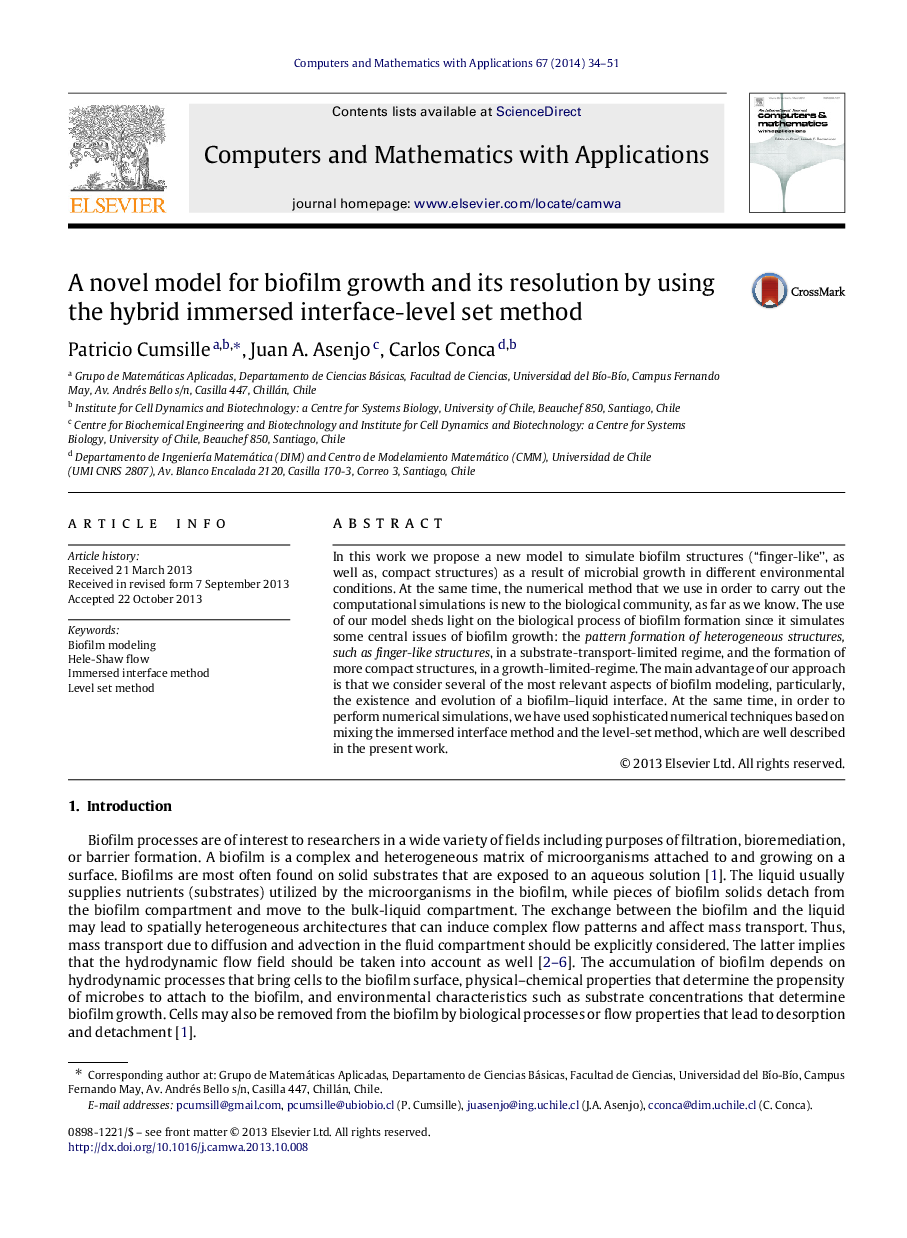| Article ID | Journal | Published Year | Pages | File Type |
|---|---|---|---|---|
| 470449 | Computers & Mathematics with Applications | 2014 | 18 Pages |
In this work we propose a new model to simulate biofilm structures (“finger-like”, as well as, compact structures) as a result of microbial growth in different environmental conditions. At the same time, the numerical method that we use in order to carry out the computational simulations is new to the biological community, as far as we know. The use of our model sheds light on the biological process of biofilm formation since it simulates some central issues of biofilm growth: the pattern formation of heterogeneous structures, such as finger-like structures, in a substrate-transport-limited regime, and the formation of more compact structures, in a growth-limited-regime. The main advantage of our approach is that we consider several of the most relevant aspects of biofilm modeling, particularly, the existence and evolution of a biofilm–liquid interface. At the same time, in order to perform numerical simulations, we have used sophisticated numerical techniques based on mixing the immersed interface method and the level-set method, which are well described in the present work.
